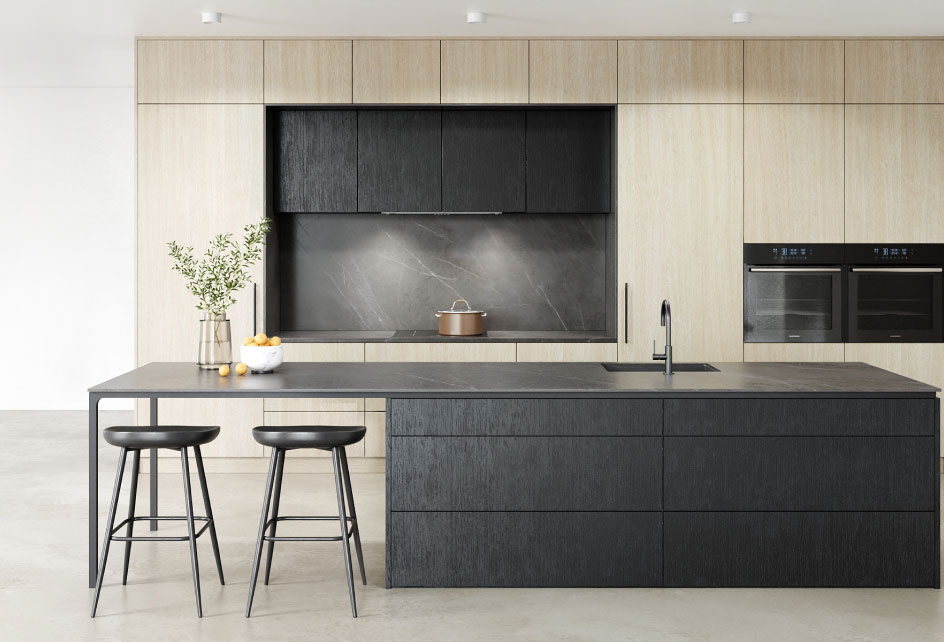Crucial Tips for Maintaining Your Kitchen Area Benchtops for Lasting Beauty
Keeping the charm and durability of your cooking area benchtops requires a thoughtful method to care and cleansing. With numerous materials and finishes readily available, the right methods might vary-- discovering these nuances might reveal unexpected insights for your cooking area treatment regimen.
Routine Cleansing Practices
Preserving a beautiful kitchen benchtop begins with executing normal cleansing methods. This simple technique not only keeps the benchtop looking fresh yet likewise reduces the threat of contamination.
Along with everyday maintenance, an once a week deep tidy is suggested. Throughout this procedure, think about utilizing a much more thorough option, such as a gentle multi-surface cleaner, to take on any persistent stains or deposits. For products like granite or quartz, it is necessary to adhere to manufacturer referrals for cleaning items to protect their stability.
Pay unique attention to high-traffic locations where spills are more probable to happen, and don't neglect to clean up the sides and corners where dirt can gather. Routine cleansing not only improves the long life of your kitchen area benchtop yet likewise makes certain a safe and welcoming cooking environment. By establishing these habits, home owners can preserve the appeal and functionality of their cooking area surface areas over time.
Preventing Severe Chemicals
When it comes to cleaning kitchen benchtops, selecting the appropriate cleaning items is critical (Kitchen Benchtops). The durability and visual allure of your benchtops can be significantly endangered by the use severe chemicals. Many traditional cleansing representatives contain abrasive compounds that can scrape and plain surface areas, resulting in undesirable marks and a decrease in their overall life expectancy
In addition, severe chemicals can respond adversely with particular materials, such as all-natural rocks or engineered surface areas, potentially causing staining or destruction. As an example, acidic cleansers can deteriorate the coating of granite or marble, while bleach can damage artificial surface areas. It is essential to decide for pH-balanced, gentle cleaning remedies that efficiently get rid of dirt and stains without risking harm to your benchtops.
In addition, lots of green items are offered on the market, which not just use risk-free cleaning options but additionally add to a healthier kitchen area setting. If you like a do it yourself strategy, a mixture of warm water and mild soap can be highly efficient (Kitchen Benchtops). By avoiding extreme chemicals, you can maintain the elegance and honesty of your kitchen area benchtops for many years to find
Using Cutting Boards
Making use of cutting boards is vital for securing your kitchen benchtops from square one and damages while preparing food. These boards act as a barrier between your blades and the surface of your benchtops, dramatically lowering the danger of undesirable marks and wear. It is suggested to utilize a reducing board made from materials such as timber, bamboo, or plastic, as each offers unique advantages.
Wooden cutting boards are known for their durability and knife-friendly residential or commercial properties; they can help keep your knives sharp. Bamboo boards are an environment-friendly choice that is lightweight and resistant to knife marks. Plastic cutting boards, on the various other hand, are easy to clean and commonly dishwashing machine safe, making them a practical alternative for everyday usage.

Sealing and Protecting Surfaces
Protecting your cooking area benchtops expands beyond making use of cutting boards; sealing the surfaces plays an essential function in guarding against spots, moisture, and put on. The best sealer can enhance the durability of materials, such as granite, quartz, and wood, guaranteeing they maintain their aesthetic allure gradually.

Application of the sealer ought to be carried out in a tidy, dry setting, complying with the manufacturer's directions for optimal outcomes. Typically, this entails cleaning up the surface thoroughly, using the sealer uniformly, and permitting it to cure as suggested. Normal maintenance, including resealing every 1-3 years relying on use and material, will strengthen security and prolong the life of your benchtops, guaranteeing they stay a magnificent prime focus in your kitchen.
Addressing Discolorations Immediately
Stains on kitchen area benchtops can promptly become a considerable problem if not dealt with without delay. The longer a discolor remains, the more tough it ends up being to remove, potentially resulting in long-term staining this and damages to the surface area. It is necessary to take on spills and stains as soon as they take place.
Different products require specific methods to tarnish elimination. Non-porous surface areas like quartz can generally be cleansed with light soap and water, while permeable products, such as all-natural stone, may need specific cleansers to stop fluid infiltration. Constantly describe the manufacturer's guidelines for the very best cleansing practices.

Regular maintenance, including sealing porous surfaces, can significantly reduce the threat of discoloration. By without delay resolving spills and understanding the details requirements of your benchtop product, you can protect the visual charm and functionality of your cooking area surface areas for years to find.
Verdict
In final thought, preserving the appeal and capability of kitchen benchtops requires adherence to important cleansing methods, evasion of extreme chemicals, and the use of safety steps such as reducing boards. Normal sealing of permeable materials and prompt attention to spills and stains are vital for protecting the stability of surface areas. By carrying out these approaches, the long life and aesthetic appeal of kitchen benchtops can be considerably improved, guaranteeing a beautiful and resilient culinary atmosphere.